
The Sabra and Shatila massacre was committed by the Israeli army, the South Lebanon Army, and the Lebanese Forces (the military wing of the Kataeb Party) against Palestinian refugees in the Sabra and Shatila refugee camps. It lasted between September 16th and 18th, 1982.
While the Sabra and Shatila massacre was not the first or the last massacre against Palestinians, its brutality and the circumstances surrounding it made it a turning point in the collective Palestinian conscience. The images of bodies and body parts, mixed with mud and dust, along with the pools of water with the limbs of children floating in them, remain vivid in Palestinian memory.
The massacre took place from September 16th to 18th, 1982, in the Sabra and Shatila Palestinian refugee camps. It was described by those who witnessed it as "the most atrocious in human history."
Those involved in the massacre included:
The Lebanese Christian Kataeb Party (Lebanese Forces), led by Elie Hobeika.
The South Lebanon Army, led by Saad Haddad.
The Israeli occupation army, led by Ariel Sharon.
It is worth noting that the South Lebanon Army was established by Israel during its invasion of Lebanon, and most of its members fled to Israel after the liberation of the South in 2000.
After Israel's invasion of the Lebanese capital, Beirut, and the 88-day battle against the Palestine Liberation Organization (PLO), West Beirut was completely besieged. The Israeli forces committed massacres and crimes against civilians by bombing them, cutting off electricity and water. This ended with an agreement for the PLO to leave Lebanon, dispersing its fighters to several Arab countries after receiving assurances from the US to protect the Palestinian camps and their Lebanese allies from civilian casualties after the withdrawal of the resistance from Lebanon.
On September 14th, 1982, Bashir Gemayel, the leader of the Lebanese Kataeb militia, was assassinated by Habib Shartouni, a Maronite Christian and member of the Syrian Social Nationalist Party. After his burial, three squads belonging to the forces and Kataeb militias, as well as the South Lebanon Army, surrounded the Palestinian refugee camps in Sabra and Shatila under the pretext of searching for 1,500 armed Palestinians.
The Israeli forces surrounded the site and illuminated it with flares at night. Some claim that Ariel Sharon climbed to the roof of the former Kuwaiti embassy, overlooking the camp, to oversee the massacre.
The artillery and Israeli aircraft bombarded Sabra and Shatila, despite being devoid of weapons and militants. They also besieged the entrances, only occupied by innocent Palestinian refugees and Lebanese civilians. These forces allowed Kataeb fighters thirsty for Palestinian blood to enter.
Over three days and nights, separatist groups and Israeli soldiers committed horrific massacres against the residents of the isolated camp, using machine guns, pistols, knives, axes, and bayonets.
They also stormed the Akka Hospital, killing Palestinian nurses and doctors, kidnapping patients and survivors fleeing the massacre from inside the hospital.
Eyewitnesses who lived through the massacre recounted scenes of pregnant women with their bellies cut open, their bodies thrown in the alleys of the camp, and children whose limbs were severed. Dozens of mutilated bodies and corpses were scattered in the streets and inside the destroyed houses. They also kidnapped nurses and doctors from the Akka Hospital to other destinations, where they were executed.
The witnesses also described seeing corpses everywhere in the camp, in the corridors, on chairs, in front of doors, and inside destroyed houses. Some women were subjected to repeated rape.
The Israeli occupation did not only cover up the killing of humans and create conditions to crush the defeated Palestinian who challenged it in the siege of Beirut. On Sunday, September 19, 1982, they stole documents from the Palestinian Research Center and took the archive in trucks.
The Sabra and Shatila massacre claimed the lives of 1,500 martyrs from innocent Palestinians, including children and women. The Kataeb forces left behind hundreds of pseudo-alive bodies, in addition to subjecting some women to repeated rape. The massacre was carried out in the absence of weapons and militants from the camp, and under strict American commitments to protect Palestinians and their Lebanese allies from civilian casualties after the resistance left Lebanon.
The massacre aimed to achieve two goals: first, to demoralize the Palestinians and their Lebanese allies, and second, to fuel sectarian hatred among the Lebanese themselves.
The children of Sabra and Shatila, who lost their loved ones in the massacre, were not broken by it. The children who were hidden by their mothers in the corners of the houses grew up, and today they are reshaping the memory in a broader image that knows how to confront the killers and rapists. The memory of the mothers' dreams that were violated and the beheaded bodies will haunt those who violated the dreams and cut the heads. The people of victory, who were not defeated by years of catastrophe, occupation crimes, and its lackeys, will remain committed to the martyrs' covenant.
Testimonies:
Israel had pledged to Philip Habib, the representative of the US government, not to enter West Beirut, and had promised to respect the civilian population in the Palestinian refugee camps. Habib had also promised Yasser Arafat to release nine thousand prisoners in Israel. However, on Thursday, the massacres in Sabra and Shatila began.
Jean Genet - 4 Hours in Shatila
Milanah Butrus and her only commemorative photo of her family come out every year to tell the world her story. It was taken by a journalist, showing her standing near the bodies of her children and her husband who were killed in the Sabra and Shatila massacre in 1982.
Our dreams fell with the body of that 40-day-old child, who was dissected alive in the Sabra and Shatila massacre before they killed him with knives.
Ali Al-Halaw (60 years old) - Resident of Shatila Camp
Robert Fisk wrote on the anniversary of the Sabra and Shatila massacre in 2012 that he smells the scent of injustice every time he visits the place where 1700 Palestinians were killed. He noted that heads of states and governments line up to mourn the victims of September 11th, while no Arab leader dared to visit the mass graves of the victims of Sabra and Shatila.
Mohammed Hashem from the town of Naqoura - Official in the Lebanese Red Cross
A Palestinian poet lost 54 members of her family in the Sabra and Shatila massacre and thought she had lost her daughter, while her daughter thought her mother was dead. Rehab Canaan went to a TV channel to recite her poetry, and by chance, one of her former neighbors recognized her and told her daughter that her mother was alive.
.. and the mother reunited with her daughter ..


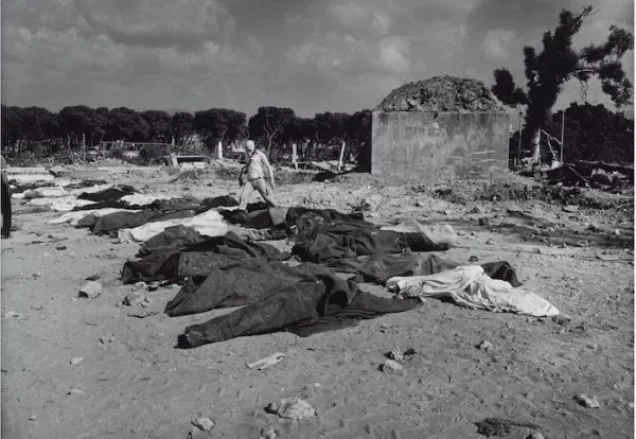




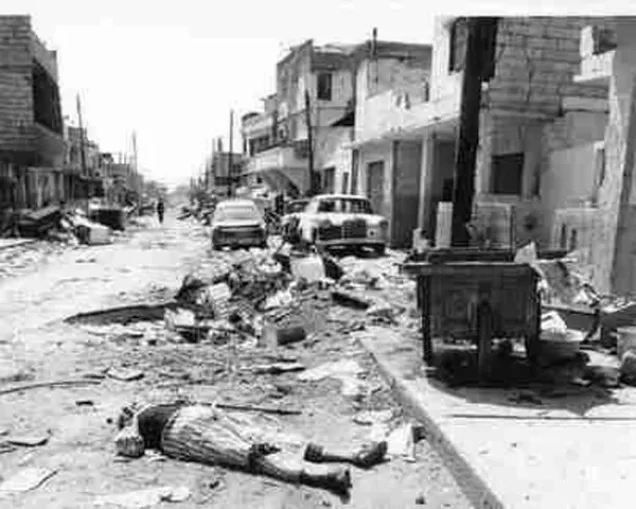




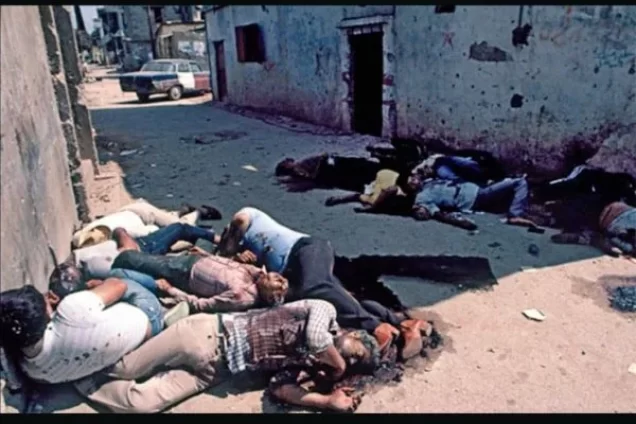
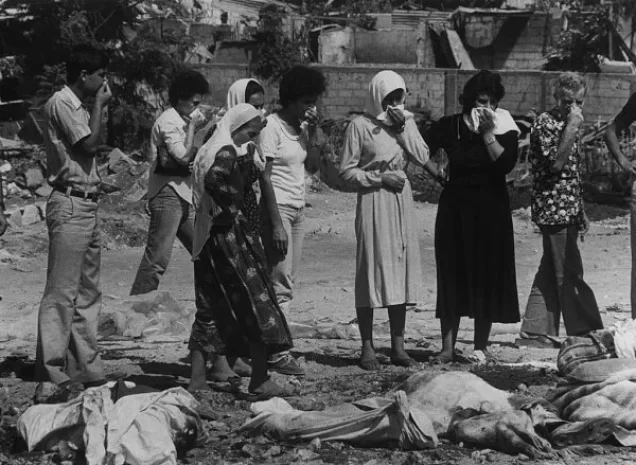
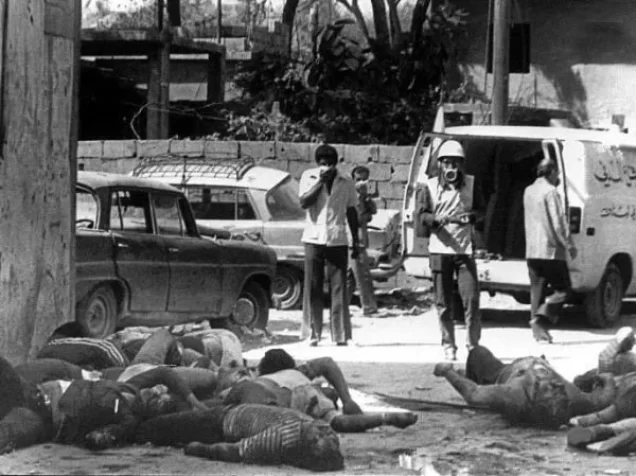
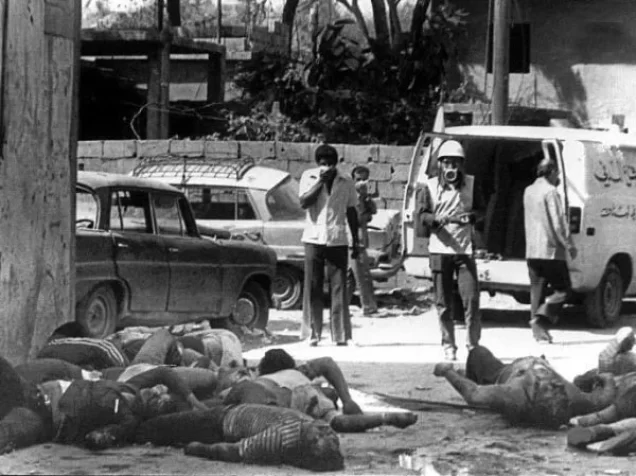


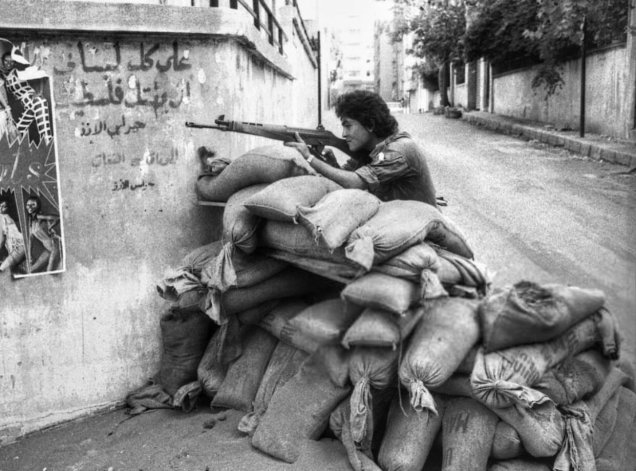


التعليقات - 1